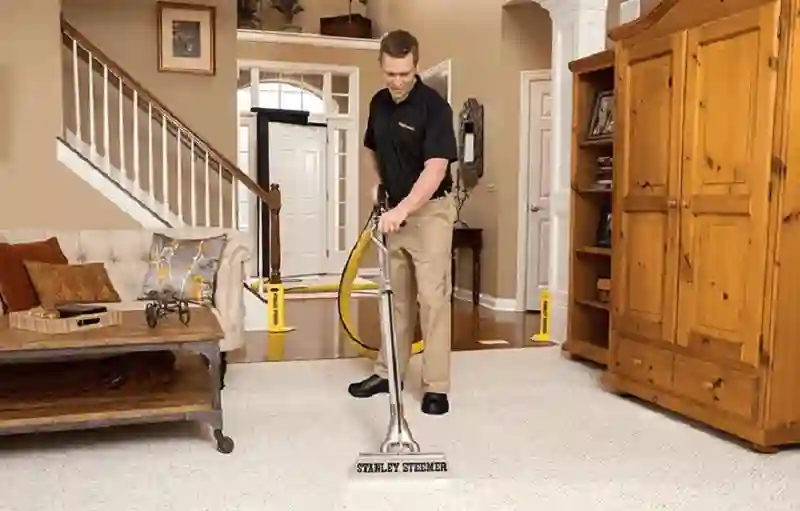High humidity can be a common challenge in many homes, especially in regions with warm and humid climates. While humidity is a natural part of the environment, excessive moisture in your home can lead to a host of problems, including the growth of mold and mildew in your carpets. In this article, we’ll explore the world of carpet cleaning for homes with high humidity and discuss effective strategies for mold prevention to keep your carpets clean and healthy.
Understanding the Impact of High Humidity
High humidity levels can have several adverse effects on your home, including:
- Mold and Mildew Growth: Excess moisture can create the perfect conditions for mold and mildew to thrive in your carpets, leading to unsightly stains and potential health risks.
- Odor Issues: High humidity can cause a musty odor in your home, especially if mold or mildew growth is present.
- Allergen Accumulation: Humid conditions can also lead to the accumulation of allergens like dust mites, which can trigger allergies and respiratory issues.
The Importance of Mold Prevention
Preventing mold growth in your carpets is crucial not only for maintaining a clean and pleasant living environment but also for safeguarding the health of your family. Mold spores can become airborne and lead to respiratory problems, particularly for individuals with allergies or asthma.
Proactive mold prevention measures are essential, especially in homes with high humidity levels. Here are some effective strategies to keep your carpets mold-free:
1. Control Indoor Humidity
The first step in mold prevention is to control indoor humidity levels. You can do this by:
- Using dehumidifiers: Invest in a quality dehumidifier to remove excess moisture from the air. Be sure to set it to maintain humidity levels between 30% and 50%.
- Ventilation: Ensure proper ventilation in areas prone to high humidity, such as bathrooms, kitchens, and basements. Use exhaust fans when cooking or taking hot showers.
- Air conditioning: Running your air conditioner not only cools the air but also reduces humidity levels in your home.
2. Regular Vacuuming
Regular vacuuming is an essential part of mold prevention in high-humidity environments. Vacuum your carpets at least once a week using a vacuum cleaner equipped with a HEPA filter to effectively capture mold spores and allergens. Pay extra attention to high-traffic areas and corners where mold is more likely to develop.
3. Prompt Spill and Moisture Cleanup
In homes with high humidity, it’s crucial to address spills and moisture promptly. Even small spills can create localized areas of excess moisture that are ideal for mold growth. Use clean towels or paper towels to blot and absorb any liquid spills immediately.
4. Dry Carpets Thoroughly
If your carpets become wet or damp due to spills, leaks, or flooding, it’s essential to dry them thoroughly to prevent mold growth. Here’s what you can do:
- Use fans: Position fans to circulate air and expedite drying.
- Open windows: If weather conditions permit, open windows to increase airflow.
- Dehumidifiers: Run a dehumidifier to remove excess moisture from the air.
- Professional cleaning: Consider professional carpet cleaning to ensure deep cleaning and thorough drying if your carpets are extensively wet.
5. Regular Professional Carpet Cleaning
Professional carpet cleaning is a highly effective way to prevent mold growth in your carpets. Professional cleaners use specialized equipment and techniques to remove dirt, dust, and moisture from your carpets, reducing the risk of mold development.
Here are some additional benefits of professional carpet cleaning for mold prevention:
- Deep cleaning: Professionals can penetrate deep into carpet fibers to remove mold spores and allergens.
- Mold treatment: If mold growth is already present, professionals can treat the affected areas with anti-mold solutions to inhibit further growth.
- Drying expertise: Professional cleaners have the knowledge and equipment to ensure your carpets are thoroughly dried after cleaning.
6. Use Area Rugs and Mats
To further protect your carpets from moisture and potential mold growth, consider using area rugs or mats in high-traffic and spill-prone areas. These can serve as a barrier, absorbing moisture and preventing it from reaching the underlying carpet.
7. Keep Carpets Clean and Dry in High-Humidity Areas
In areas of your home where humidity tends to be higher, such as basements or bathrooms, take extra precautions:
- Ensure proper ventilation with exhaust fans and open windows when possible.
- Use moisture-resistant padding and underlayment beneath your carpets.
- Consider using a moisture barrier beneath area rugs in these areas.
- Inspect and address any leaks or water intrusion promptly.
8. Regular Maintenance and Inspection
Finally, regular maintenance and inspection of your carpets are crucial for mold prevention. Keep an eye out for any signs of mold, such as musty odors, discoloration, or visible mold growth. Address any issues promptly to prevent further mold development.
Conclusion
Mold prevention is a critical aspect of maintaining clean and healthy carpets, especially in homes with high humidity levels. By controlling indoor humidity, regular vacuuming, prompt spill cleanup, and professional carpet cleaning, you can effectively prevent mold growth and ensure that your carpets remain clean and safe for your family.
Remember that mold prevention is not only essential for the appearance of your carpets but also for the health and well-being of your loved ones. A mold-free home with clean and dry carpets provides a comfortable and safe living environment, even in high-humidity conditions.



